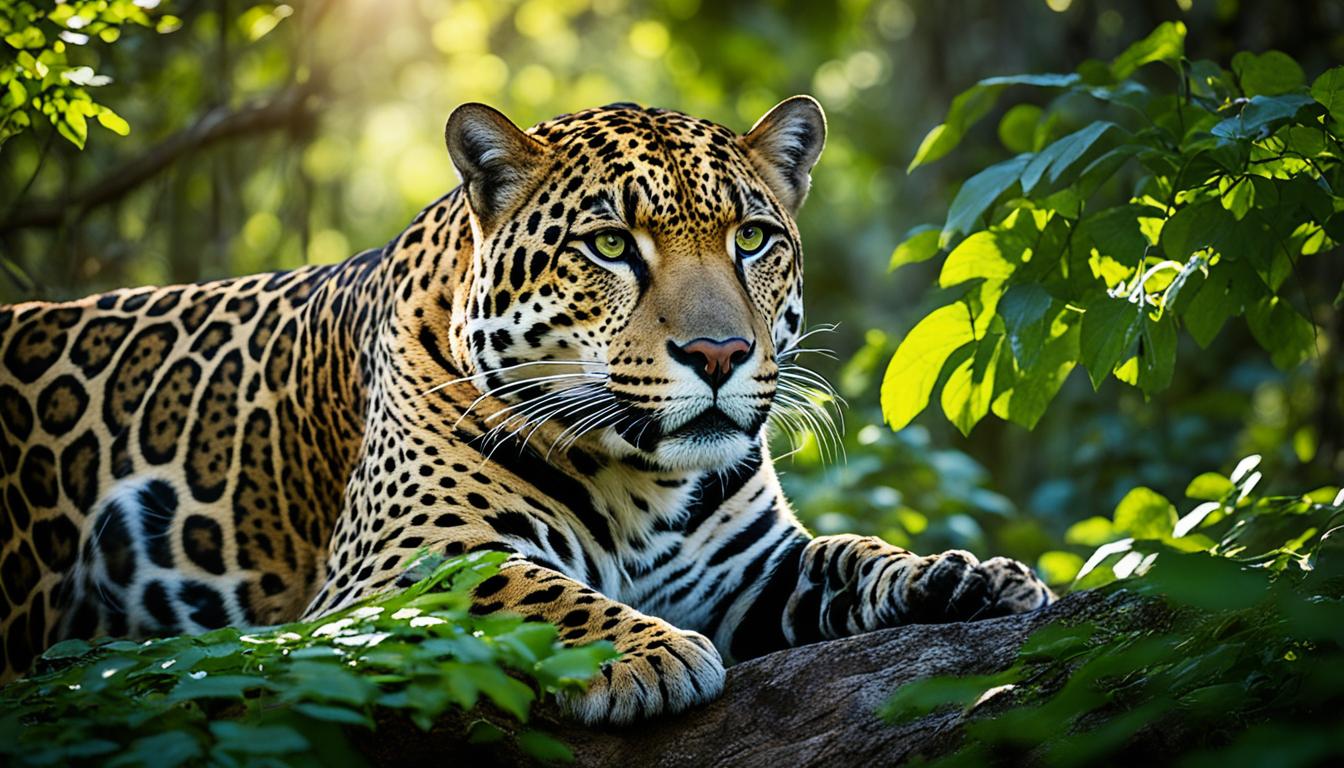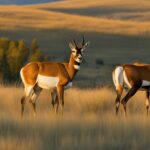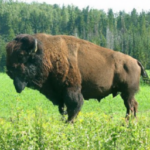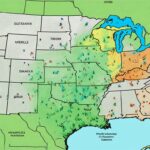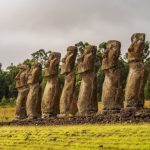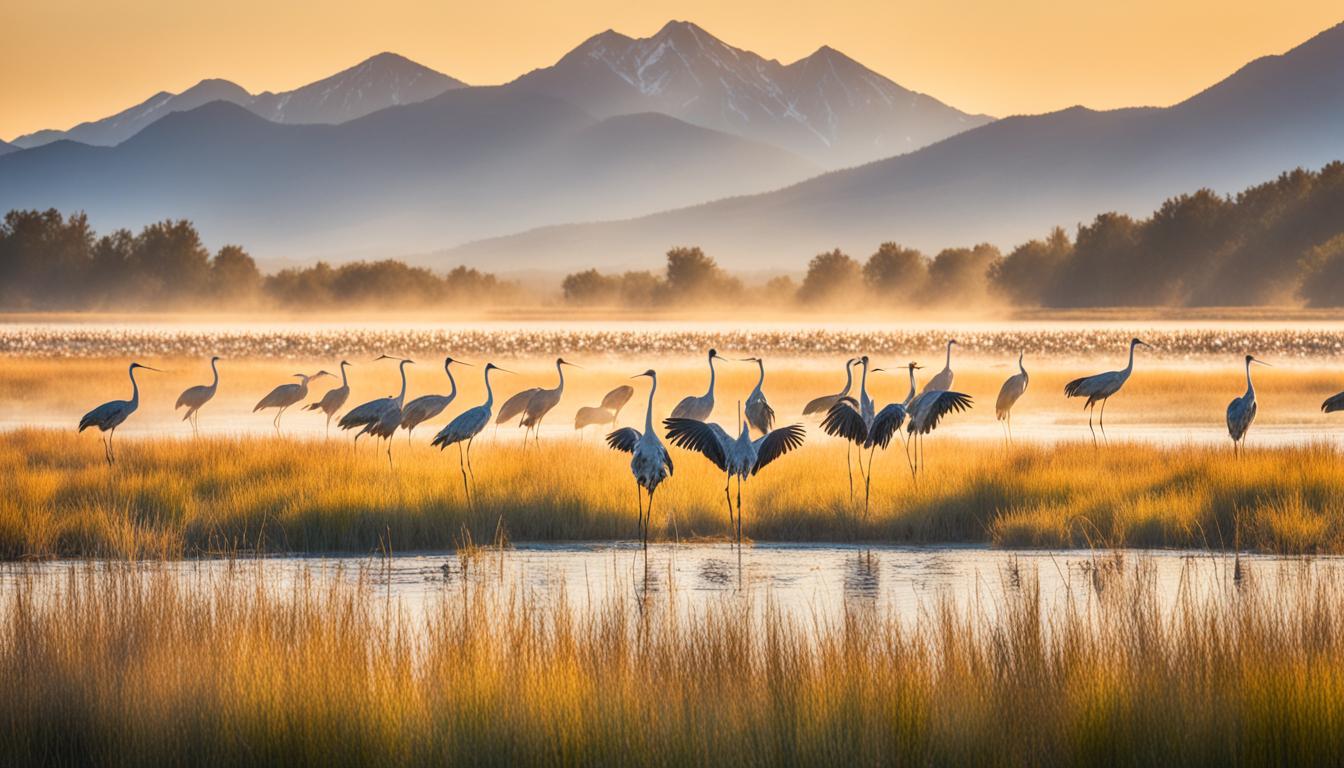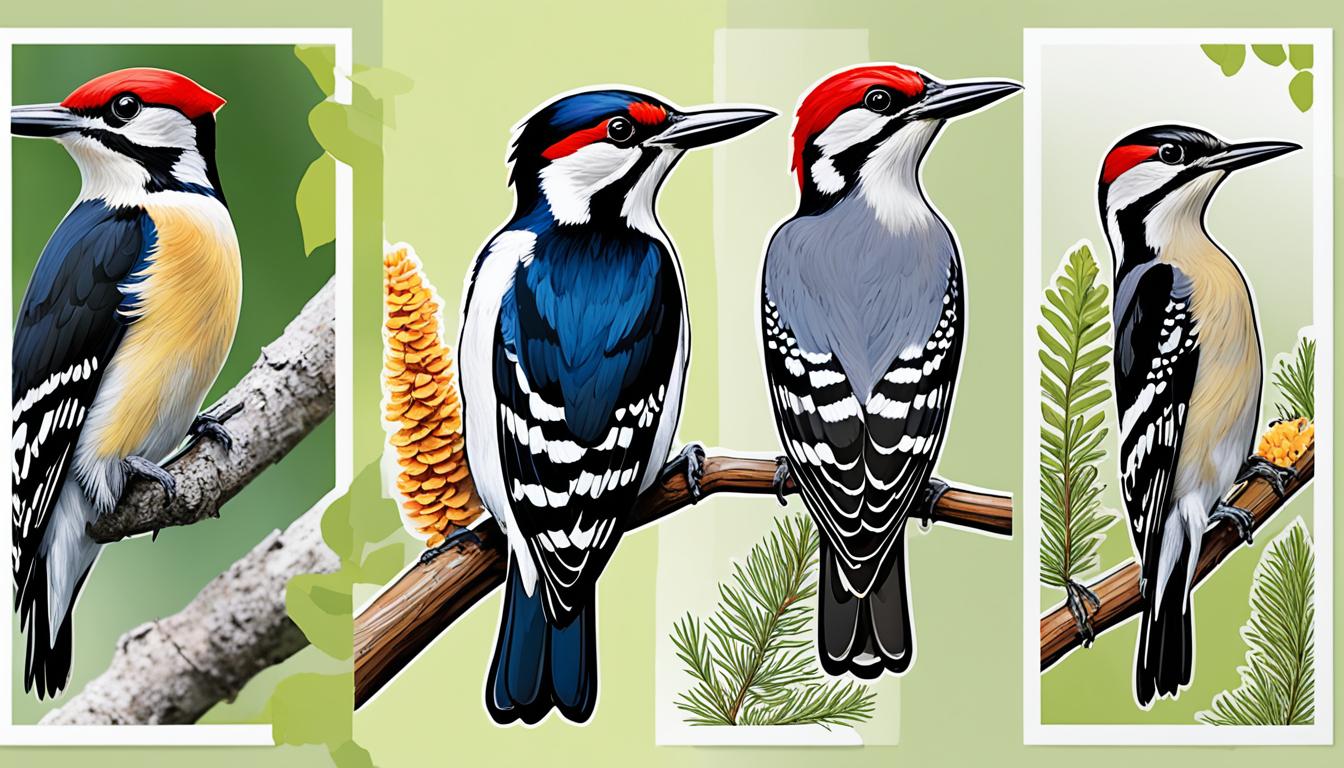Imagine wild jaguars roaming Arizona, New Mexico, or Texas. You might think it’s not possible, but these powerful big cats once lived in the southern U.S.
Historically, jaguars thrived in parts of the U.S. like California, Arizona, New Mexico, and more. Yet, their numbers dropped sharply due to hunting and losing their homes. This decline led to the last female jaguar in the U.S. being killed in the mid-1960s.
Although a self-sustaining population no longer exists in the U.S., jaguar sightings still happen. This is especially true in Arizona. Males from Sonora, Mexico, sometimes cross the border into the U.S. Such events give hope for jaguars’ potential return to their native lands.
Recent sightings of jaguars in the U.S. are very important. These sightings show that jaguars might come back to their old territories. It gives hope for their future in America.
Historical Range of Jaguars in the USA
Learning about the jaguars’ historical range in the USA is deep. It shows us how they fit in their environment and with people. Their area and how they moved were influenced by nature and human actions for thousands of years.
Early Presence
We know jaguars were in America early on from fossils and findings. They traveled from the south to now as far north as Colorado. This journey shows how vital jaguars were and how they adjusted to many lands.
Geographical Spread
Jaguars were found across vast parts of the USA. From California to Louisiana, they lived in places from dry deserts to lush wetlands. Their broad range underlines the need to protect these jaguars.
| Region | Fossil Evidence | Historical Records |
|---|---|---|
| California | Abundant | Numerous sightings |
| Colorado | Scattered | Few sightings |
| Louisiana | Limited | Several sightings |
Factors Leading to Jaguar Decline
Jaguars in the United States are decreasing because of hunting and losing their homes. For a long time, humans have been hunting jaguars. This has made their numbers drop a lot.
Hunting and Human Impact
In the early to mid-20th century, hunting jaguars was common. There were even campaigns to kill predators. Humans hunted jaguars a lot, which almost made them disappear in the region.
Habitat Loss
Jaguars have lost a lot of their homes. Trees were cut down, fields for farming grew, and cities expanded. This made it hard for jaguars to find places to live and food to eat.
Hunting and losing their homes are big reasons why jaguars are disappearing in the United States. We need to work hard to protect and fix the places where jaguars live. This is very important for their future.
Current Sightings of Jaguars in the USA
In the state of Arizona, there are reports of jaguars showing up. This is a big deal because it shows that these large cats sometimes visit the U.S. A recent current jaguar sightings confirm this fact, highlighting their rare appearances in American territories.
Recent Sightings in Arizona
Arizona is now known for being a key area for recent American jaguar sightings. Wildlife cameras have managed to catch these big cats on film. This discovery is encouraging for those working to protect these animals.
Notable Individuals Such as “El Jefe”
“El Jefe” is one famous male jaguar seen living in the Santa Rita Mountains of Arizona. His presence highlights the jaguars’ adaptability and resilience. Thanks to efforts tracking him, we’ve learned more about these amazing creatures. The phrase El Jefe jaguar Arizona is now synonymous with the boldness and reemergence of jaguars in certain parts of the U.S.
Are there any jaguars in the USA?
In southern Arizona, the rare spotting of wild jaguars in America has caught the eye of many. These beautiful creatures, mostly male, come from the Sonora area. They make their way into the U.S. every now and then, delighting anyone lucky enough to see them.
Even though they don’t stay, their visits mean a lot. By using camera traps, we’ve captured these special visits. This helps us see how important it is to keep the lands connected. Doing so ensures these jaguars can move freely between Mexico and the U.S.
Scientists love tracking these wild jaguars. It teaches them about how these cats behave and move. Protecting open spaces and wildlife areas could lead to more American jaguar sightings. This shows why both countries must work together to protect these amazing animals.
USA Jaguar Population and Breeding
In recent years, conversations about the USA jaguar population have brought up key issues. Despite sightings in the United States, a stable breeding group of jaguars is lacking. This article will dive into the current situation and the obstacles to having a North American jaguars breeding group.
Overview of Population Status
The USA jaguar population is mostly made up of single male jaguars that move from Mexico. They are sometimes seen in places like Arizona and New Mexico, lined up by wildlife cameras. Yet, no one’s found resident females or any sign of breeding, making the idea of a continuously growing population almost impossible.
Challenges for Breeding Populations
One of the big issues for jaguar breeding is the lack of females and proper homes. To start a strong population, males and females both need good places to live, full of food, and away from too much human contact. But, habitats are getting smaller, and people are moving closer, making things worse. Seeing only male jaguars makes starting breeding populations up again a huge challenge.
| Factors | Impact on Breeding |
|---|---|
| Absence of Female Jaguars | Prevents establishment of breeding populations |
| Habitat Loss | Reduces suitable living and breeding areas |
| Human Encroachment | Increases mortality and stress levels |
| Solitary Males | Lack of mating opportunities |
Even though work is being done to save their homes and protect them, there’s a lot still to do. We need everyone to help in saving these jaguar breeding challenges. For a real change, we must all join together in saving what’s left for a chance at a brighter tomorrow for North American jaguars in the U.S.
North American Jaguars: Historical and Current Presence
Jaguars have been key in North America’s wildlife, known for their huge range. They used to be everywhere, even beyond what today we call North America.
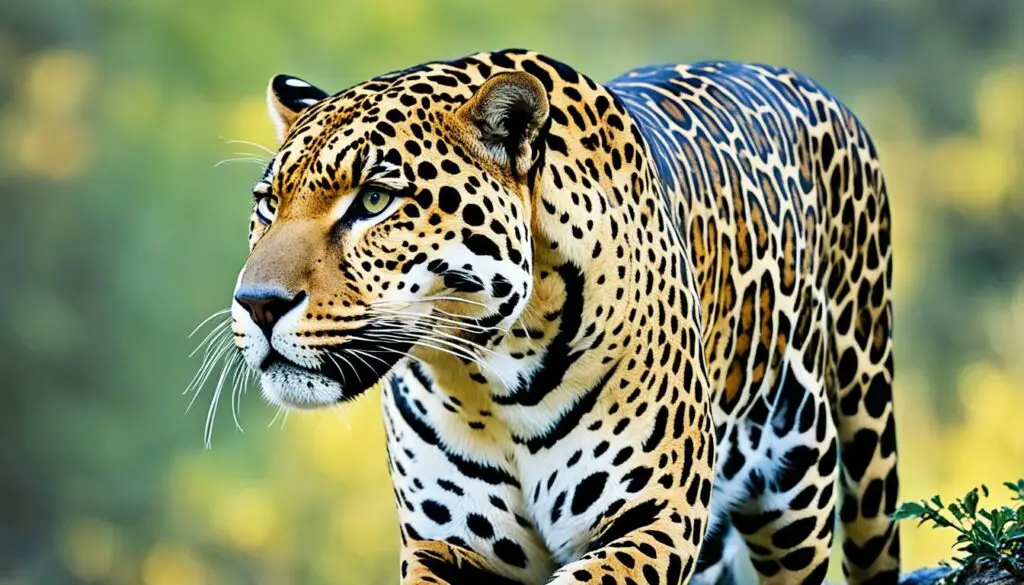
Historical Presence in North America
The North American jaguars historical range spanned through different places and types of land. Jaguars were seen as south as the United States, up to Colorado, and over to Louisiana. Over the years, proof of their existence has been found, showing how important they were in North America.
Current Presence and Populations
Looking at the jaguar current presence in America, sightings are occasional, often in Arizona. But, we haven’t seen them stay there for good. These jaguars might be just passing through, mostly from Sonora, Mexico. The fact that they don’t stay and breed in the U.S. leaves a question mark about their real presence here.
Keeping an eye on these solitary jaguars is important. It helps us learn if they might start living here again.
| Time Period | Presence |
|---|---|
| Historical | Extensive, with evidence of a strong presence across various U.S. regions |
| Current | Intermittent sightings, primarily in southern states; no confirmed breeding populations |
Tracking and Identifying Jaguars in America
The effort to protect jaguars is key in the American southwest. Tracking and understanding these majestic cats help in their care. Conservationists work hard to observe their actions and ensure their safety.
Conservation Efforts and Monitoring
Conserving jaguars means protecting their homes and keeping their lands linked. Groups work together to keep an eye on the big cats. This way, they track where these cats go.
Role of Wildlife Cameras
Wildlife cameras have changed how we study jaguars. This advanced tech takes pictures and videos of the cats. The footage is a gold mine for understanding jaguar life, movement, and how they interact with other animals. This helps in making plans to protect them better.
Impact of Border Wall on Jaguar Movement
The border wall between the U.S. and Mexico creates big problems for wildlife. It especially affects animals like jaguars. This barrier stops jaguars from roaming freely across their usual areas.
Impeding Wildlife Corridors
The border wall greatly affects the jaguar wildlife corridors. These paths are where jaguars look for food, water, and mates. The barrier breaks their living spaces, stopping them from moving freely as they should.
Environmental Consequences
The environmental impact of the border wall goes further than just blocking off areas. It messes up the ecosystems that jaguars rely on. Limited movement can isolate jaguars genetically, reducing their variety and strength. The wall also keeps jaguars from getting to the resources they need, making recovery in the U.S. harder for them.
All these effects show how important it is to think about animal movement when planning infrastructure. Doing so helps protect the balance of nature that many species, on both sides of the border, share.
Jaguar Conservation Efforts in the USA
The work to save jaguars in America involves many strategies. A key focus is preserving their habitat. This means keeping and restoring the varied landscapes jaguars need. It helps them find food and shelter, and it could mean they come back to old areas.
Encouraging people to live alongside jaguars is also important. Both conservationists and locals must collaborate. They develop ways to peacefully share spaces. Teaching and reaching out to communities is one way to spread the word about jaguars. It shows their value in nature.
Dealing with barriers like the U.S.-Mexico border wall is critical, too. These structures block paths jaguars use and limit their gene mixing. Supporting policies that lower habitat cuts and improve travel for jaguars helps protect them. It secures their place in their original territories.

